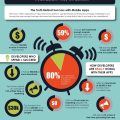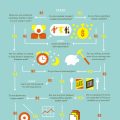From Idea to Impact: How Startups Turn Concepts into Profits
As an entrepreneur or startup enthusiast, you’ve likely heard the phrase “idea to impact” thrown around in conversations and conferences. But what does it really mean? How do startups take a simple concept and turn it into a profitable business that makes a real difference in people’s lives?
In this article, we’ll dive deep into the process of turning ideas into impact, exploring the key stages, strategies, and insights that successful startups use to create scalable and sustainable businesses. Whether you’re just starting out or looking to refine your existing startup strategy, this guide is designed to help you turn your concept into a game-changing company.
Idea Generation: Where it all Begins
It starts with an idea – a spark of creativity that sets the entire journey in motion. Idea generation is the initial stage where entrepreneurs and startups identify problems or opportunities in the market, often stemming from personal experiences, passions, or observations.
During this phase, it’s essential to:
- Validate assumptions: Talk to potential customers, gather feedback, and verify that your idea addresses a real pain point.
- Conduct market research: Analyze competitors, trends, and industry reports to understand the landscape.
- Brainstorm and iterate: Use techniques like mind mapping, SCAMPER (Substitute, Combine, Adapt, Modify, Put to Another Use, Eliminate, and Rearrange), or Design Thinking to generate and refine ideas.
Some popular tools for idea generation include:
- MindMeister for creating digital mind maps
- Google Trends for researching market trends
- UserTesting for gathering user feedback
Prototyping: Bringing Ideas to Life
Once you have a solid idea, it’s time to create a prototype – a tangible representation of your concept. Prototyping allows you to test and refine your product or service, ensuring that it meets the needs of your target audience.
Key prototyping strategies include:
- Minimum Viable Product (MVP): Develop a basic version of your product to validate assumptions and gather feedback.
- Design sprints: Organize time-boxed workshops with cross-functional teams to rapidly design and test prototypes.
- User testing: Conduct usability tests, surveys, or interviews to collect data on user interactions.
Some popular prototyping tools include:
- InVision for designing digital products
- Figma for collaborative UI/UX design
- Adobe XD for creating interactive prototypes
Business Modeling: Creating a Sustainable Framework
With a validated prototype in hand, it’s time to develop a comprehensive business model. This involves defining your revenue streams, cost structures, and key partnerships.
Key components of a solid business model include:
- Revenue streams: Identify multiple sources of income, such as subscription fees, advertising, or data analytics.
- Cost structure: Outline fixed and variable costs, including salaries, marketing expenses, and infrastructure investments.
- Key activities: Determine essential tasks required to deliver your product or service.
- Partnerships: Establish relationships with suppliers, distributors, or other businesses that support your operations.
Some popular business modeling tools include:
- Business Model Canvas for visualizing business models
- Strategyzer for creating and testing business models
- Lean Startup Machine for developing lean startup strategies
Scaling: From Traction to Impact
Once you’ve refined your product, validated your business model, and gained initial traction, it’s time to scale. Scaling involves expanding your customer base, increasing revenue, and solidifying your market position.
Key scaling strategies include:
- Content marketing: Leverage blog posts, social media, podcasts, or video content to attract and engage with a wider audience.
- Paid advertising: Utilize platforms like Google Ads, Facebook Ads, or LinkedIn Ads to reach new customers.
- Influencer partnerships: Collaborate with influencers in your niche to expand brand awareness.
- Strategic hiring: Recruit talent that can help you scale efficiently and effectively.
Some popular scaling tools include:
- HubSpot for inbound marketing and sales
- Hootsuite for social media management
- Salesforce for customer relationship management
Measuring Impact: Tracking Progress and Performance
As your startup grows, it’s crucial to measure its impact – both financially and socially. This involves tracking key performance indicators (KPIs) that align with your business goals.
Some essential KPIs to monitor include:
- Revenue growth: Track monthly or quarterly revenue increases.
- Customer acquisition costs: Measure the cost of acquiring new customers.
- Retention rates: Analyze customer retention and churn rates.
- Social impact metrics: Monitor metrics like carbon footprint reduction, community engagement, or job creation.
Some popular tools for measuring impact include:
- Google Analytics for web analytics
- Mixpanel for product analytics
- Socialsuite for social media monitoring
Conclusion: Turning Concepts into Profits
Turning an idea into a profitable business that makes a real impact requires dedication, persistence, and strategic planning. By following the stages outlined in this article – from idea generation to scaling – you can create a startup that truly makes a difference.
Remember to stay adaptable, continuously validate your assumptions, and prioritize user needs throughout your journey. With the right tools, strategies, and mindset, you’ll be well on your way to transforming your concept into a game-changing company.
Additional Resources
For further reading and learning, check out these recommended resources:
- Books: “The Lean Startup” by Eric Ries, “Business Model Generation” by Alexander Osterwalder
- Courses: Stanford University’s “Startup Success” on Coursera, UC Berkeley’s “Entrepreneurship” on edX
- Podcasts: “How I Built This” with Guy Raz, “The Tim Ferriss Show”
By combining the insights from this article with these additional resources, you’ll be well-equipped to turn your idea into a scalable and sustainable business that drives real impact.










